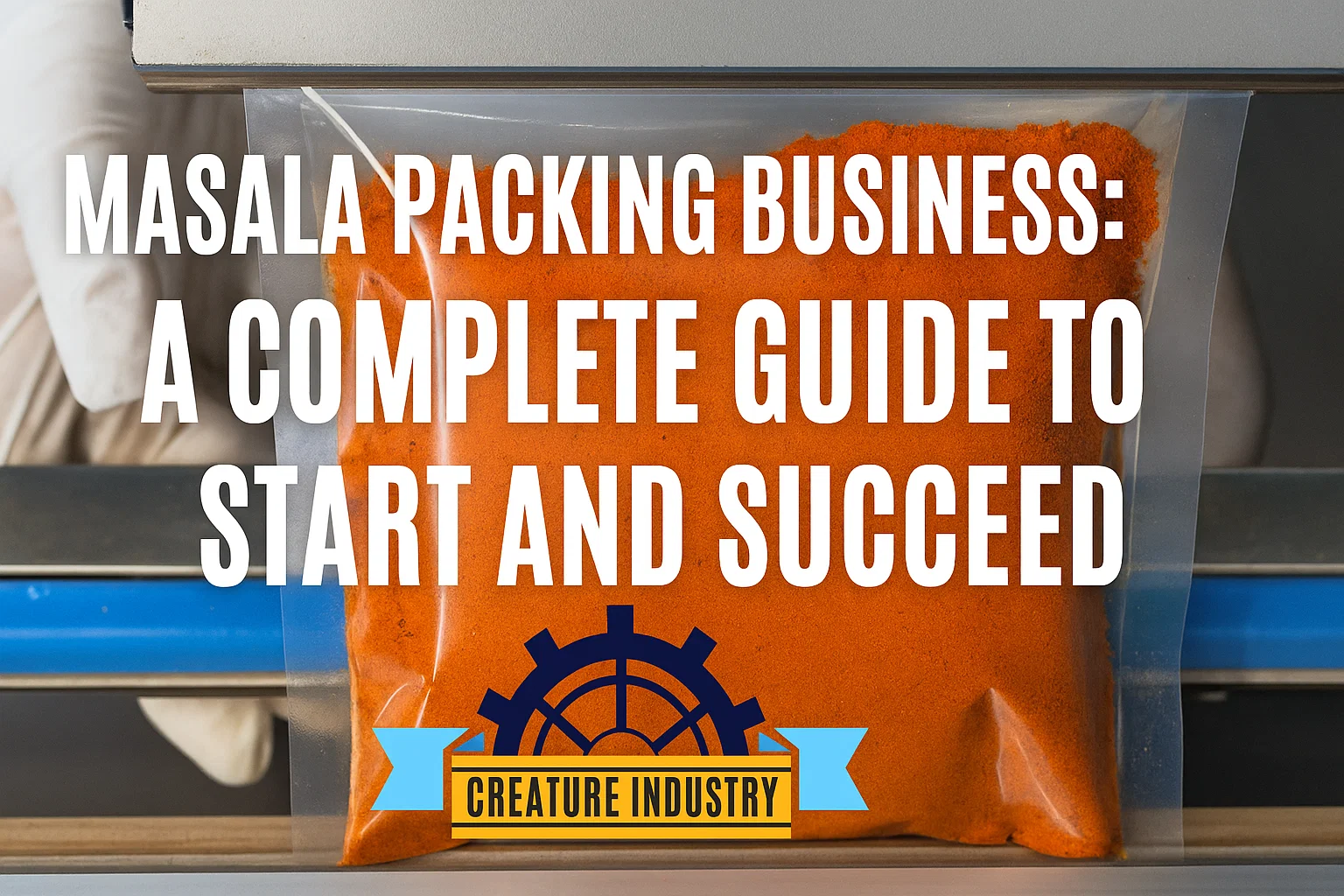The Masala Packing Business is one of the fastest-growing opportunities in India and worldwide due to the increasing demand for ready-to-use spices. With a relatively low investment, high returns, and constant market demand, this business offers a profitable venture for entrepreneurs who want to step into the food industry. Below, we provide a comprehensive, step-by-step guide to start and scale your masala packing business effectively.
Why Start a Masala Packing Business?
The Indian spice trade has a large global footprint. We refer to India as the home of spices, which we see in a very large variety of forms, from turmeric, coriander, cumin, and chili, to name a few. Also, our domestic market for spices is very large indeed. We are seeing a trend of growth in the preference for branded and hygienically packed masalas, which are taking over the loose spices. As for what makes this business attractive:
Low entry barrier in many food industries.
Spices have a constant demand in home and restaurant settings.
Chance to go after both domestic and international markets.
High profit is achieved when proper marketing and distribution are put in place.
Market Potential of the Masala Packing Business
The global spice market is projected to grow steadily due to the rising demand for authentic and convenient cooking solutions. In India, packaged spice consumption is increasing in both rural and urban areas. Branded masala powders like MDH, Everest, and Catch have shown how lucrative this business can be.
The market is segmented into:
- Pure spices – single-ingredient products like turmeric, chili powder, and coriander powder.
- Blended masalas – mixed spices like garam masala, chicken masala, and pav bhaji masala.
- Specialty masalas – region-specific or cuisine-focused mixes.
This segmentation allows new entrepreneurs to target niche markets and stand out with unique offerings.
Licenses and Legal Requirements
Starting a masala packing business requires certain licenses and registrations to ensure compliance with food safety and quality standards.
- Business Registration – Register as a sole proprietorship, partnership, or private limited company.
- FSSAI License – Mandatory for any food business in India.
- GST Registration – To sell products legally and claim input tax credits.
- Trademark Registration – Protect your brand name and logo.
- BIS Certification (Optional) – Adds credibility to your products.
- MSME Registration – Helpful for availing government subsidies and loans.
Raw Materials Required
The main raw materials for this business are spices that can be sourced locally from farmers, wholesalers, or spice markets. Some common spices include:
- Turmeric
- Red chili
- Coriander
- Cumin
- Black pepper
- Cloves
- Cardamom
- Fenugreek
Apart from spices, you will also need:
- Packaging materials (pouches, plastic containers, laminated sheets).
- Labels and stickers for branding.
- Cartons for bulk transportation.
Machinery and Equipment for Masala Packing
The type of machinery depends on the scale of your business. Small-scale units can begin with semi-automatic machines, while large-scale operations may invest in fully automated plants.
Essential machinery includes:
- Spice grinding machine – To convert whole spices into powder.
- Roaster machine – For roasting spices to enhance flavor.
- Mixing machine – To blend multiple spices uniformly.
- Machine Pouch Packing Machine – For filling and sealing spices in pouches efficiently.
- Packaging machine – For packing into different pouch sizes or containers.
- Sealing machine – To seal packs and ensure freshness.
- Weighing scale – For accurate quantity measurement.
The Pouch Packing Machine is especially vital for ensuring speed, accuracy, and hygiene in the packaging process. It reduces manual effort and ensures consistency in weight and sealing, which is crucial for building customer trust.
Investment in machinery may range from ₹2 lakhs to ₹15 lakhs, depending on the scale.
Step-by-Step Process of Masala Packing
- Procurement of Raw Spices – Buy high-quality raw spices from reliable sources.
- Cleaning and Drying – Remove impurities and ensure moisture-free spices.
- Roasting – Roast certain spices to enhance aroma and shelf life.
- Grinding – Use spice grinders to make fine powders.
- Blending – Mix different spices as per the recipe for blended masalas.
- Quality Check – Test for purity, taste, and consistency.
- Packaging – Use the Pouch Packing Machine for efficient and attractive packaging.
- Labeling – Add nutritional information, ingredients, and branding.
- Distribution – Supply to wholesalers, retailers, and online platforms.
Packaging and Branding Strategy
In the masala industry, packaging plays a critical role in attracting customers. Good packaging ensures freshness and prevents contamination.
- Packaging Options – Pouches, boxes, plastic jars, zip-lock bags.
- Design – Eye-catching labels with brand name and logo.
- Information – Nutritional values, expiry date, FSSAI license number.
Strong branding creates trust. Position your brand as hygienic, pure, and flavorful, differentiating it from local competitors.
Investment and Profit Margin
The initial investment for a small-scale masala packing unit ranges from ₹3 lakhs to ₹5 lakhs. This includes machinery, raw materials, and licenses.
Profit margins vary depending on the product and market, but on average:
- Pure spices – 20–25% profit margin.
- Blended masalas – 30–40% profit margin.
- Premium masalas – 50% or higher.
With good distribution, the business can achieve monthly revenues of ₹2–5 lakhs and grow steadily.
Marketing Strategies for Masala Packing Business
To make your brand stand out, adopt both traditional and digital marketing strategies:
- Local Retail Distribution – Tie up with grocery stores, supermarkets, and kirana shops.
- Wholesale Supply – Provide bulk supplies to hotels, restaurants, and caterers.
- Online Platforms – Sell on Amazon, Flipkart, and your own website.
- Social Media Marketing – Use Facebook, Instagram, and YouTube to promote recipes and products.
- Sampling and Promotions – Distribute free samples in supermarkets or fairs.
Digital marketing plays a significant role today. Investing in SEO, PPC campaigns, and influencer marketing can boost sales dramatically.
Challenges in the Masala Packing Business
While the business is lucrative, it comes with its own challenges:
- High competition from established brands.
- Maintaining consistent quality and taste.
- Sourcing raw materials at stable prices.
- Building brand recognition in a crowded market.
By focusing on unique flavors, quality assurance, and strong marketing, these challenges can be overcome.
Conclusion
The Masala Packing Business is a profitable and scalable venture for aspiring entrepreneurs. With the right approach to sourcing, packaging, branding, and marketing, this business can deliver impressive returns. The addition of modern machinery like the Pouch Packing Machine makes operations faster, more efficient, and hygienic, giving you an edge in today’s competitive market.

